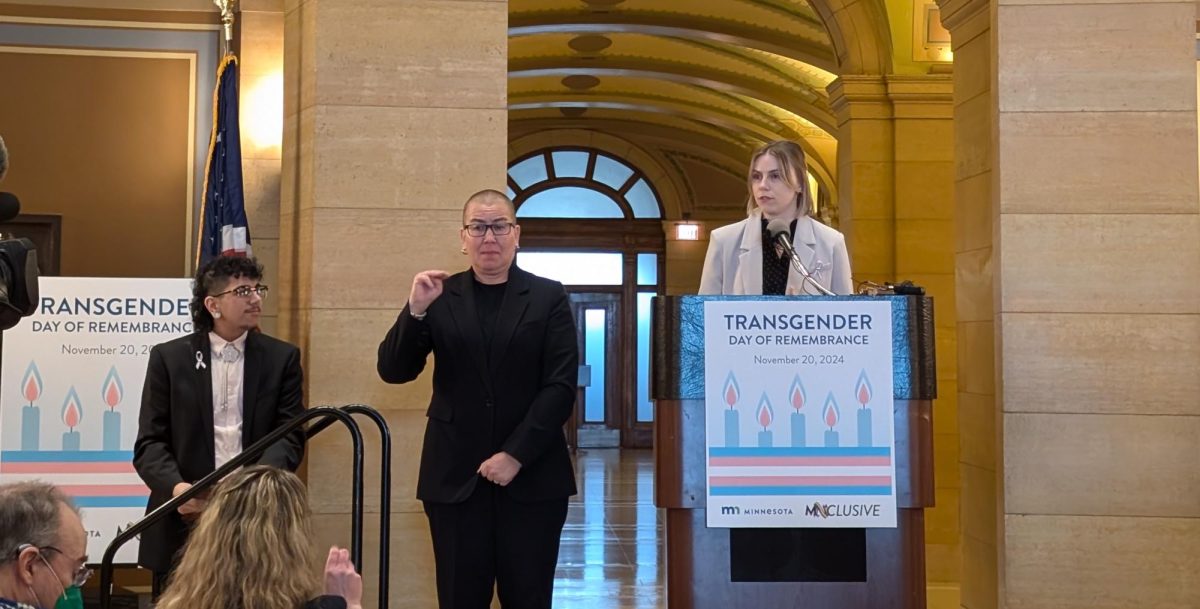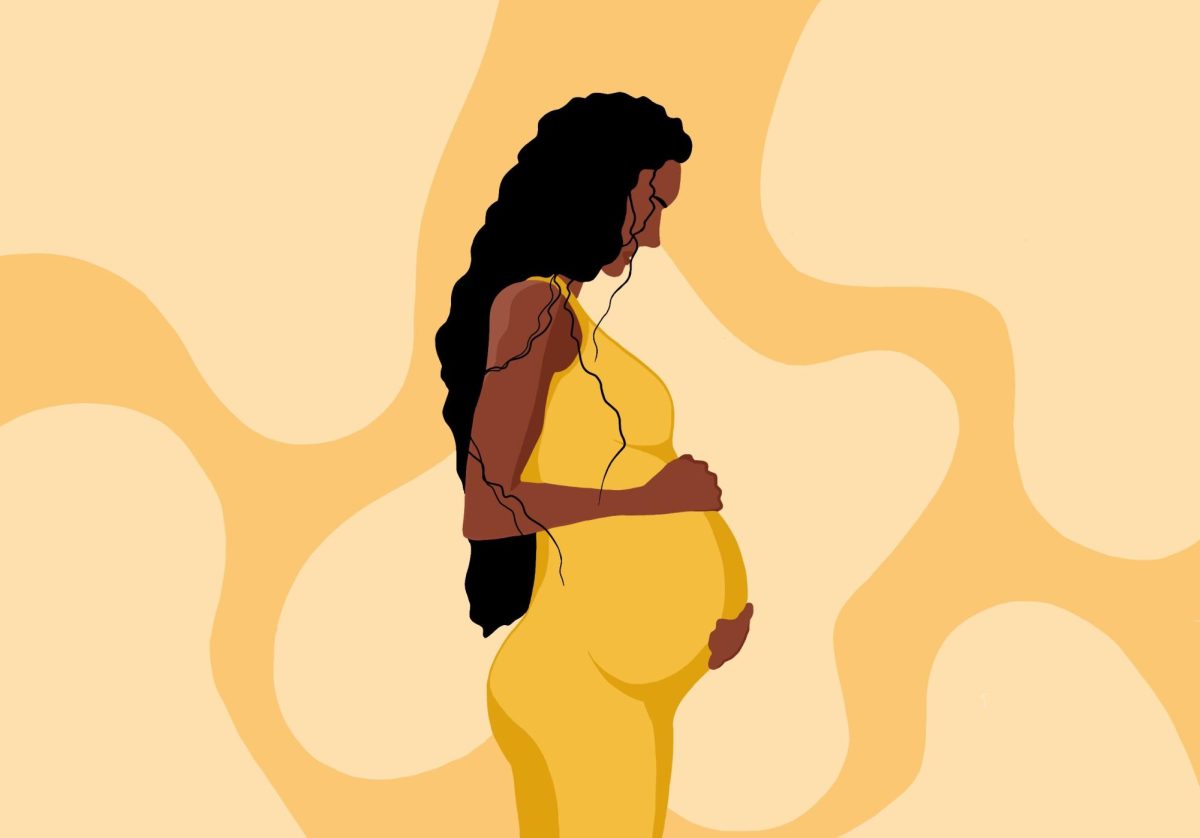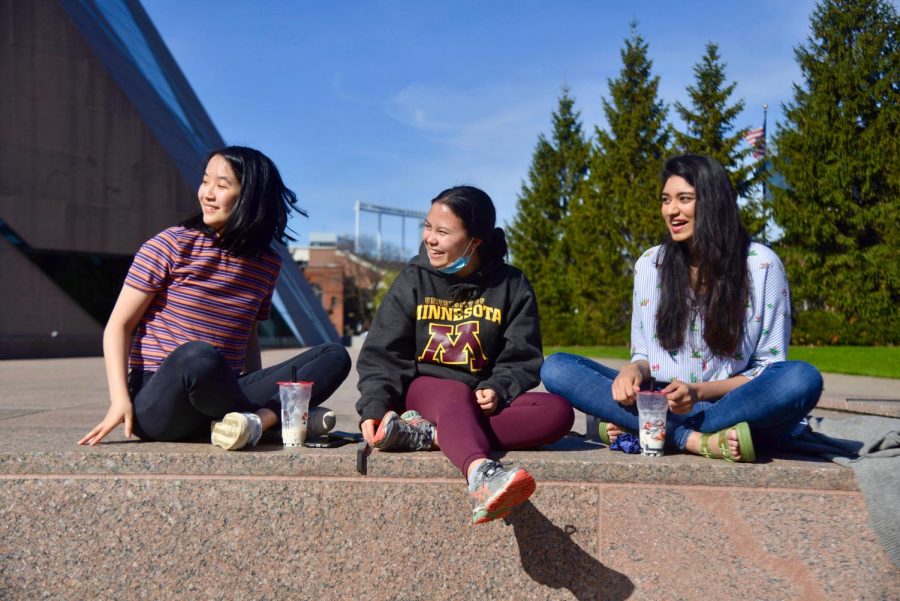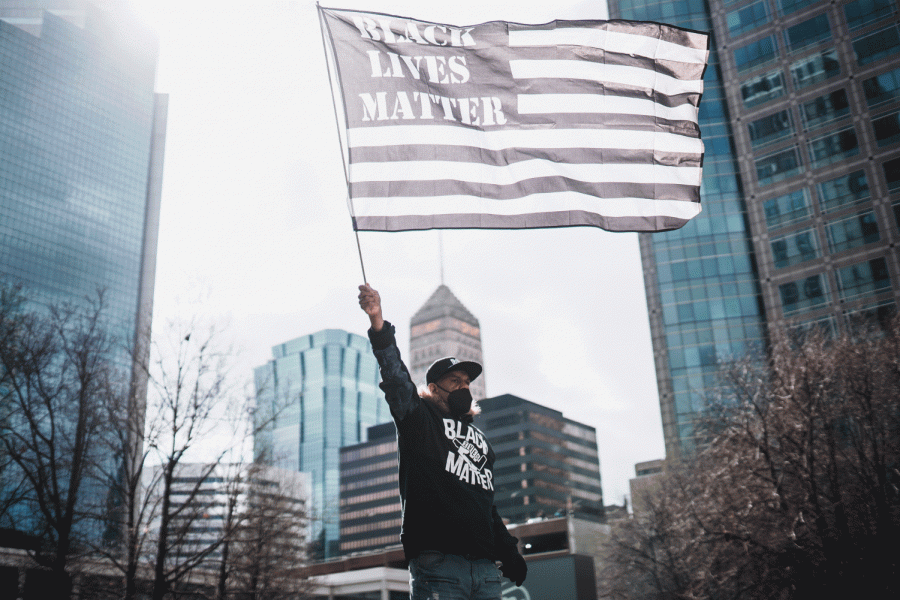Aching muscles were no more than background noise to Claire Stephens until the pain started to creep into her wrists.
Stephens, then a music education first-year at Winona State University, worried that daily violin practice could be inducing the pangs.
One year later, she set down the instrument for good.
Despite giving up the hobby she intended to make her career, the ache continued to spread — first to her back and ribs and then to her head, until Stephens noticed herself feeling dizzy and was unable to remember important moments in her life. Just months into her second year at school, she moved back home.
A doctor diagnosed Stephens with fibromyalgia, muscle pain throughout the body often associated with anxiety and poor memory. The doctor told the 20-year-old she would feel off for the rest of her life.
Now a journalism junior at the University of Minnesota, she’s among many young adults who suffer from one of the most underresearched disorders of the age group.
 About one in four adults aged 18 to 29 report experiencing chronic pain, according to one estimate. Often, having the disorder means tossing loved activities to the wayside — as it did for Stephens — and adopting special habits to maintain health.
About one in four adults aged 18 to 29 report experiencing chronic pain, according to one estimate. Often, having the disorder means tossing loved activities to the wayside — as it did for Stephens — and adopting special habits to maintain health.
Health professionals differ in their treatments, with recommendations ranging from opioids to natural remedies such as chiropractic care and acupuncture.
Despite medical marijuana’s legalization for intractable, or chronic, pain in Minnesota last year, doctors across the board say there’s no proof that the drug could be a cure.
To be considered chronic, pain must last three or more months. But the kind of pain included in the condition’s definition can range from migraines to spinal pain or injury-induced discomfort and more.
The wide range makes finding a conclusive solution for chronic pain intangible, further veiling the disorder for young adults who are already isolated by stigmas that pain is disabling, that young people can’t feel pain and that those who claim to be feeling achy must be lying.
Understudied and underreported
Chronic pain is difficult to study objectively, said Roni Evans, an associate professor in the University’s Center for Spirituality and Healing.
“You can’t see that someone has pain. It’s not like a broken leg or a broken arm; it is something that someone experiences, so you really have to rely on what they’re telling you,” she said. “And that makes it hard to study.”
When Shweta Kapoor, a postdoctoral psychiatry and behavioral sciences fellow at Emory University, began her dissertation on young adults with chronic pain in 2012, she immediately noticed a lack of precedent research.
Though recent data has shown pain is almost as prevalent in young people as it is in older generations, Kapoor said, they’re less likely to ask for help for fear of seeming weak. And when young adults in pain don’t step forward, it becomes difficult to build a research base.
“At this age, it is associated with being in the prime of our lives. We’re supposed to be healthy and doing what other people are doing,” she said. “While your friends are moving on and doing things people generally do in college, you are basically stuck.”
As part of her study, Kapoor interviewed five focus groups about their experiences with lasting pain.
She quickly found that those students, all from the University of Alabama, were missing out on major college traditions. Some refrained from the strenuous process of greek life recruitment or left football games because the standing made them ache.
Still, others would power through parties and game days in excruciating pain, fearing judgment if they complained.
“When we talk about chronic pain, we don’t imagine a young person,” she said. “And that becomes a huge barrier in living their life.”
Kapoor found students experiencing chronic pain were also more likely to be depressed and dissatisfied with life. And because pain levels could be unpredictable, students reported high levels of stress.
For several students with from chronic pain at the University of Minnesota, stress, isolation and stigmas are familiar acquaintances.
Third-year computer science doctoral student Tim Snyder said his fibromyalgia causes him daily body ache. At its worst, the pain feels like he has been set on fire, he said. When he’s around big groups of people, Snyder’s pain and anxiety levels flare.
“It makes me far more of a hermit than I’d like to be,” he said.
Though a disability accommodations letter gave him the extra leeway to finish classwork at an altered pace as an undergraduate, he said graduate professors haven’t been so lenient.
“A lot of people, in general, just don’t understand pain,” Snyder said. “It seems like people mostly just feel like I should suck it up and that people, in general, when they’re in pain, suck it up. And they don’t understand that it’s something that is really draining.”
Stephens, the journalism student with fibromyalgia, spent two years searching for an accurate diagnosis. As doctor after doctor sent her home with a new opinion, Stephens began to wonder if she was imagining it.
“I would tell my parents, ‘You know, my back is really sore, too, and I’ve been having these issues.’ And I started talking to them more openly about that sort of stuff,” she said. “I didn’t want to feel like I was whining.”
sort of stuff,” she said. “I didn’t want to feel like I was whining.”
Some members of her family accused her of crying wolf, Stephens said.
“There were some times I’d be at the nurse’s office, and I’d call my mom from school, and she didn’t believe me,” she said. “I just felt like a wimp all the time. I think it’s hard not to judge someone who doesn’t get their laundry done for a week because they honestly don’t have the energy to pick that basket up and go downstairs.”
Dr. Alfred Anderson, the owner and medical director at the Realief Medical Pain Clinic in St. Louis Park, Minn., said his college-aged patients often come into the clinic in search of treatment for debilitating conditions some people ignore.
“We have patients with severe fibromyalgia, which everyone just kind of looks at like, ‘Oh yeah, sure, just pull yourself up by the bootstraps,’” he said.
Kids and young adults who are ignored by parent and teacher figures can be more likely to hide their pain for fear of rejection, said Dr. James Fricton, a University dentistry professor and pain specialist at the Minnesota Head and Neck Pain Clinic.
“You think that kids are so resilient — and they are resilient, and their muscles do get better faster — and that’s why we need to pay attention when kids complain of pain,” he said. “Teachers need to wake up to the reality that kids who don’t have pain are going to study and be better students.”
The daily grind
University chemical engineering and computer science first-year Vee Livermore starts each day after a minimum of eight hours of sleep.
Livermore braves an obstacle course of chairs each morning to shut off an alarm across the room. A morning shower helps soothe their muscles, and they also eat breakfast to avoid hunger, which can trigger migraines.
Livermore has experienced head-throbbing pain since childhood, which worsened in high school. At that point, a couple of days ache-free was a blessing.
Eventually, their mother, a migraine-sufferer herself, took Livermore to the emergency room after a monthlong migraine left the teenager delirious.
“I’d wake up, and it was bad,” Livermore said. “I’d go to bed, and it was still bad.”
 An injection at the hospital should’ve sent them home pain-free for two weeks. The migraine returned the following evening.
An injection at the hospital should’ve sent them home pain-free for two weeks. The migraine returned the following evening.
Now, Livermore takes 25 milligrams of Escitalopram, their third medication since that ER visit. Even on the daily preventative pill, tension headaches hit Livermore about two to three times weekly, and migraines occur once every two weeks.
Some doctors say self-care is the best method of treatment for those with chronic aches, and failing to follow personalized routines can intensify symptoms.
Research suggests changing habits can help manage pain, said Fricton, the Minnesota Head and Neck Pain Clinic pain specialist. Clenching teeth or eating too much sugar, for example, can lead to headaches and migraines.
Livermore carries snacks to munch on throughout the day. Stephens makes sure to get 10 hours of sleep nightly and avoids strenuous workouts. Others with chronic pain schedule regular chiropractic adjustments.
“I kind of had to reinvent myself because I really didn’t know what I was interested in very much past [playing the violin and viola]. It really just left me feeling pretty lost and unsure of what I was doing,” Stephens said. “I had to completely re-meet myself.”

No “one size fits all”
Because chronic pain comes in varying forms, doctors and patients alike can struggle to treat it.
Anderson, the doctor and from the Realief Medical Pain Clinic, said he prescribes opioids to treat pain only when patients hav¬e exhausted all other care options.
 Guidelines released last week by the Centers for Disease Control and Prevention addressed what they called an “ongoing prescription opioid overdose epidemic” and said a limited number of studies show chronic pain patients benefit from opioid use. More than 165,000 deaths were attributed to opioid overdose from 1999 to 2014, according to the CDC.
Guidelines released last week by the Centers for Disease Control and Prevention addressed what they called an “ongoing prescription opioid overdose epidemic” and said a limited number of studies show chronic pain patients benefit from opioid use. More than 165,000 deaths were attributed to opioid overdose from 1999 to 2014, according to the CDC.
For non-cancer patients, the CDC discourages opioid treatments for chronic pain, but Anderson said all patients suffer equally.
“The difference is, of course, that non-cancer patients get looked upon as weak, and nondesirable and untouchable, as if they have leprosy,” he said. “[They] are severely limited as to what they can have for medication.”
But other physicians, like Fricton, worry opioids don’t get to the source of a person’s ailment.
Some, like first-year University chemistry student Julia Amaral, choose to refrain from taking a daily pain medication altogether and turn instead to alternative methods.
As a high school freshman, a file cabinet fell on and broke Amaral’s foot. Now, she wakes each morning to burning, cooling and vibrating sensations shooting intensely through her foot — pain she said doctors describe as worse than childbirth.
She was supposed to regain full mobility, but when she went to her podiatrist five months after surgery with a blue, vibrating foot, Amaral found she was suffering from complex regional pain syndrome, a rare sympathetic nervous system disorder.
Amaral’s go-to treatment is biofeedback, a meditative method of heart rate and breath monitoring used to relax muscles and raise the body’s temperature.
Roni Evans, the associate professor in the University’s Center for Spirituality and Healing, said while more traditional approaches to health management, like surgery and medication, can be necessary for some, trying less conventional methods can empower a patient to care for themselves.
Evans said research shows that pain is one of the most common reasons for people to use nontraditional medicine.
There’s an increasing body of evidence that treatments like massage therapy, yoga, meditation, chiropractic care and acupuncture can help treat chronic pain, she said, though the research for these methods focuses on older adults.
“We pay attention where we see the most impact,” she said. “So, in adults, when they can’t work, we see that more; we pay attention more.”
 Still, it can be difficult to teach patients about nontraditional forms of care when the convention is to seek help from an M.D., said Larry Spicer, executive director of the Minnesota Board of Chiropractic Examiners.
Still, it can be difficult to teach patients about nontraditional forms of care when the convention is to seek help from an M.D., said Larry Spicer, executive director of the Minnesota Board of Chiropractic Examiners.
And while alternative care methods are backed by peer-reviewed studies, doctors agree there’s limited proof that medical cannabis is an effective means of stopping pain.
Daily marijuana use in those under 25 is linked with diminished IQ and addiction and can trigger psychotic disorders like schizophrenia in those predisposed, said Dr. Erin Krebs, a University associate professor of medicine and a panelist on the Intractable Pain Advisory Panel with the Minnesota Department of Health.
The panel reviewed scientific data and heard from the public before approving medical marijuana for intractable, or chronic, pain in the state last year.
Krebs said she’d prefer to take the guesswork out of doctor’s hands and legalize marijuana recreationally.
“During prohibition on alcohol, people argued that physicians could prescribe alcohol,” Krebs said. “Clearly, as soon as alcohol was legal, no one thinks that physicians should prescribe it or that it’s medical.”
Evans said care comes down to one common goal: doing what’s best for a patient.
And because everyone experiences pain differently, there’s no one solution, said John Mullen, a University pain management psychologist.

Mullen helps patients understand pain can’t always be cured, but management is within reach.
“What I find exciting about my work as a health psychologist is … providing the message to people that there is hope to feel better and do better,” he said, “even if the pain can’t be completely controlled or eliminated.”













